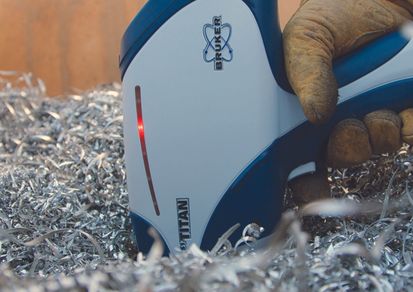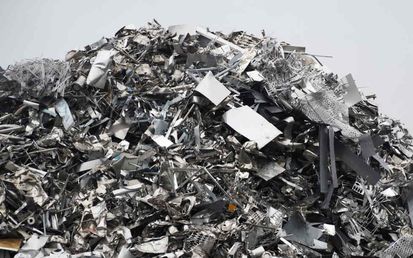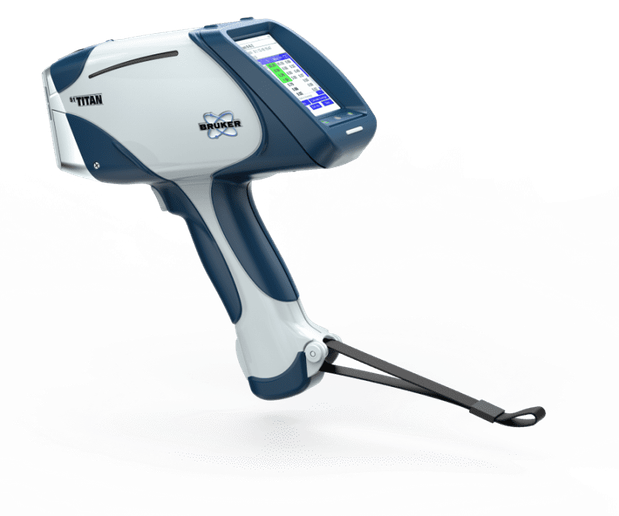Bruker’s mission is to facilitate seamless scrap metal identification within your business. Our handheld scrap metal tester was designed to simplyfy and streamline our customer's scrap sorting operations. Our scrap metal analyzer gun is the is the instrument of choice when it comes to reliable and accurate scrap metal identification. You can count on Bruker’s handheld S1 TITAN metal scrap tester to make metal scrap sorting fast and effective.
Why our metal identifier is the best choice for scrap metal sorting and alloy analysis:
Analyze metal elemental compositions and provide grade identification in seconds.
Our metal identifying gun can be used with any sample size.
Eliminate the need to send samples to outside laboratories by solving sorting needs in-house.
Maximize profits through state-of-the-art accuracy.

Detect Relevant Materials
Material properties are unique to each industry. It is important to purchase the right type of scrap to ensure the quality of your products. Knowing how to accurately identify and sort scrap metal with Positive Material Identification Testing is crucial for maximizing the value extracted from scrap materials.
With Bruker patented technology, sorting scrap metal has never been easier, more affordable, or more accurate. Identify scrap metal with the portable scrap metal analyzer gun, the S1 TITAN, to increase your profitability and the quality of your scrap.

Leveling up Scrap Metal Analysis
Scrap metal sorting used to be difficult and prone to error, relying heavily on experienced metal sorters. However, now Bruker provides metal identifying guns that can analyze the composition of scrap metal and provide grade identification in a matter of seconds. Sorting scrap for various industries — such as scrap metal recycling, incoming scrap for foundries and decommissioned aerospace equipment — has never been easier with the introduction of the S1 TITAN. Without the need for highly-trained experts, Bruker provides the quickest and most reliable method for detecting valuable elements in scrap.
The S1 TITAN is a compact yet powerful handheld XRF analyzer that can work with any sample size, from smaller wires to large heat exchangers. Determine the value of scrap metal fast — simply point and shoot while our technology does the rest.
Quick, accurate scrap metal identification (a major industrial application of Positive Material Identification) remains fundamental to the profitability of your scrap metal sorting operation. Whether you front a large recycling operation or a budding independent yard, Bruker handheld XRF sorters get the job done with unparalleled speed and precision.
You too can benefit by:
Increasing the value of your on-hand material.
Offering customers higher-quality metals.
Upgrading your stock.
Contact us to elevate your scrap processing with advanced testing!

Contact form
Bruker Nano Analytics US
5465 E Cheryl Pkwy
Madison WI 53711
Phone:+1-509-736-2999
Bruker Nano Analytics DE
Am Studio 2D
12489 Berlin
Email:info.bna@bruker.com
